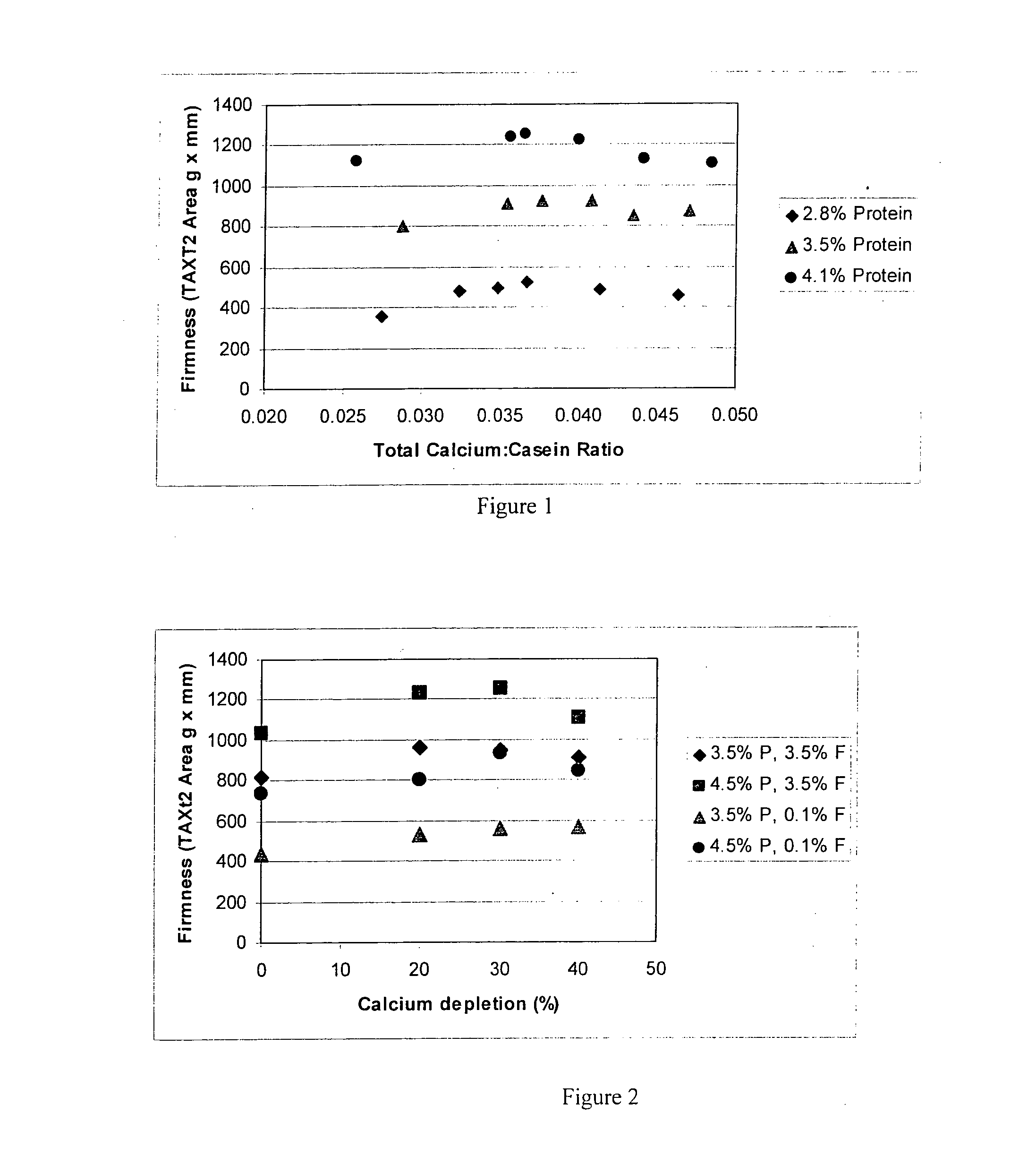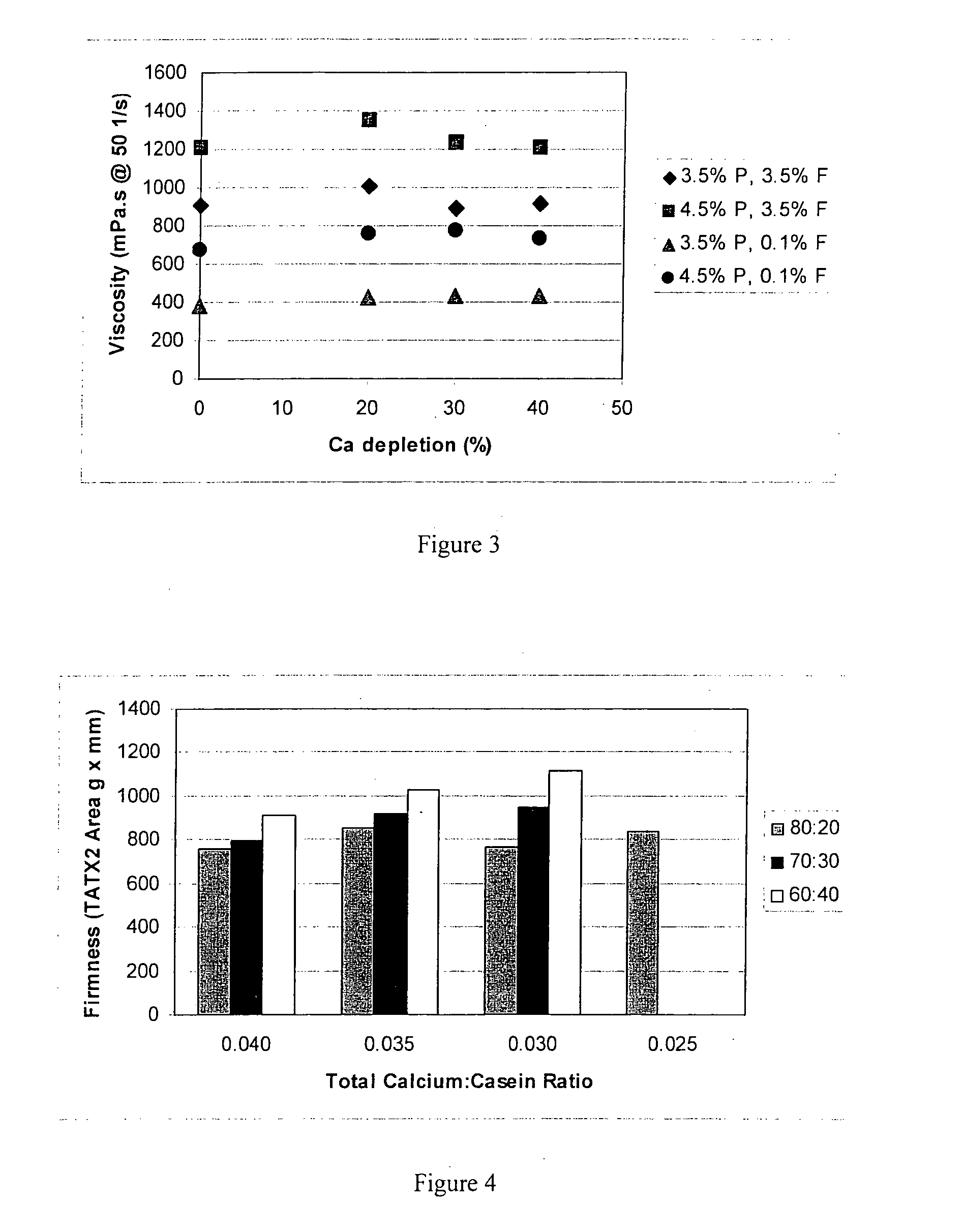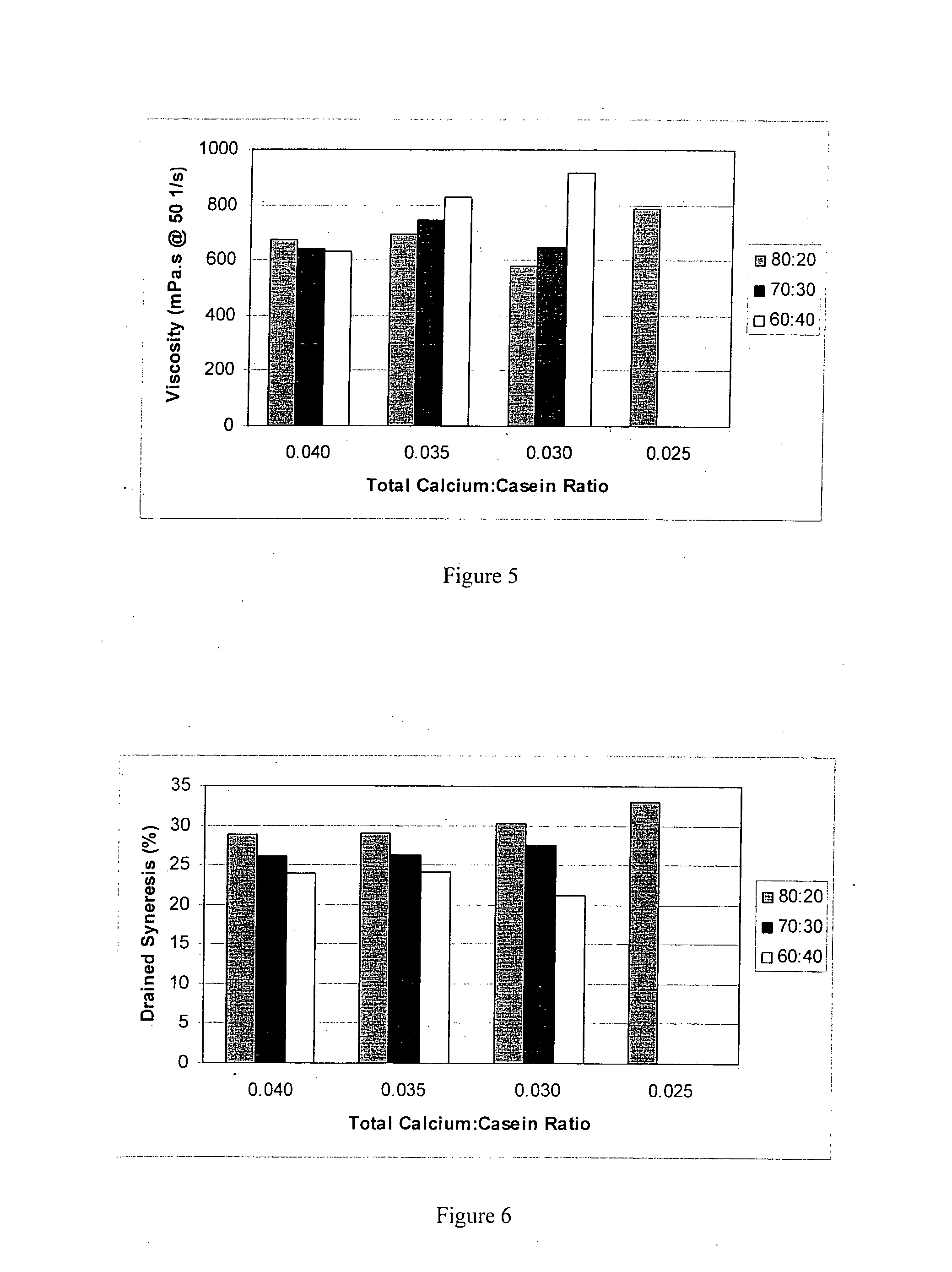Dairy Product and Process
a dairy product and process technology, applied in the field of yoghurt, can solve the problems of affecting the quality of milk, and affecting the taste of milk, so as to reduce syneresis, improve taste, and improve tas
- Summary
- Abstract
- Description
- Claims
- Application Information
AI Technical Summary
Benefits of technology
Problems solved by technology
Method used
Image
Examples
example 1
Manufacture of Calcium-Depleted Milk Powder
[0079]1000 L of skim milk was adjusted to a pH of 5.8 using dilute citric acid (e.g. 3.3%). 100 L of the cation-exchange resin (IMAC HP111E, Rohm & Haas, bearing the sulphonate group in potassium form) was filled in a stainless steel vessel of about 40 cm diameter and a height of 100 cm or a total volume of 140 L. One hundred litres of resin bed had a height of 80 cm. The 1000 L of skim was then passed through the resin at 4 bed volumes an hour or 400 L of skim milk per hour. The resulting skim milk had about 25% of the original calcium, and was evaporated and dried to produce calcium-depleted skim milk powder of composition, on a moisture free basis, given in Table 1 and designated batch 2631.
TABLE 1Cation composition of skim milk powder andion exchanged milk powder ingredientCalciumMagnesiumSodiumPotassiumIngredient(% w / w)(% w / w)(% w / w)(% w / w)SMP (typical)1.250.120.351.6Calcium-depleted0.310.0420.2353.86ingredient (Batch2631)
example 2
Yoghurt Manufacture
[0080]Yoghurts were prepared in the following way. Initially a yoghurt milk base (Dairy resource) was prepared by using: 44 g of anhydrous milk fat [AMF] (Fonterra Co-operative Group Limited, Auckland), 132 g of low heat skim milk powder [SMP] [typically about 1250 mg Ca per 100 g powder and 34% protein] (Fonterra Co-operative Group Limited, Auckland), 264 g standard whole milk powder [WMP] [typically about 26% fat and 26% protein] (Fonterra Co-operative Group Limited, Auckland), 360 g of sugar (Chelsea, New Zealand Sugar Refining Co, Auckland), and 3083.6 g of water. This resulted in a yoghurt with about 2.8% protein and about 2.2% casein w / w.
[0081]The yoghurt milk base was allowed to stand for 1 h, then heated to 65° C. and 2-stage homogenised [150 / 50 bar], followed by a heat treatment of 85° C. for 15 minutes, cooling to 38° C. A thermophilic starter culture using YC-350 (FD-DVS YC-350—YO Flex, Chr-Hansen A / S, Hoersholm, Denmark) was pre-prepared (see below) an...
example 3
GDL Trials—Optimum Level of Calcium Depletion
[0091]The samples prepared above (2.8% protein) using live cultures were compared using a chemical slow release acidulent—GDL. The same textural and syneresis behaviour with this model system was obtained. (See below.) Direct acidification is a simpler process for laboratory trials and is subject to less variability as it does not rely on the vagaries of starter culture growth. Experiments continued using GDL as a proxy for live culture growth in yoghurt samples.
[0092]The next set of experiments established the equivalence of GDL acidification and starter culture acidification at 2.8% protein and then examined the effect of calcium substitution at higher protein levels.
Lab Scale Milk Processing with Acidification by GDL:[0093]1. Recombine the milk powder blends with lactose and water to make 430 g of milk[0094]2. Stir at 55° C. for 30 min.[0095]3. Heat to 85° C. in a hot water bath and hold at 85-88° C. for 15 min.[0096]4. Cool to 10° C. ...
PUM
 Login to View More
Login to View More Abstract
Description
Claims
Application Information
 Login to View More
Login to View More - R&D
- Intellectual Property
- Life Sciences
- Materials
- Tech Scout
- Unparalleled Data Quality
- Higher Quality Content
- 60% Fewer Hallucinations
Browse by: Latest US Patents, China's latest patents, Technical Efficacy Thesaurus, Application Domain, Technology Topic, Popular Technical Reports.
© 2025 PatSnap. All rights reserved.Legal|Privacy policy|Modern Slavery Act Transparency Statement|Sitemap|About US| Contact US: help@patsnap.com



